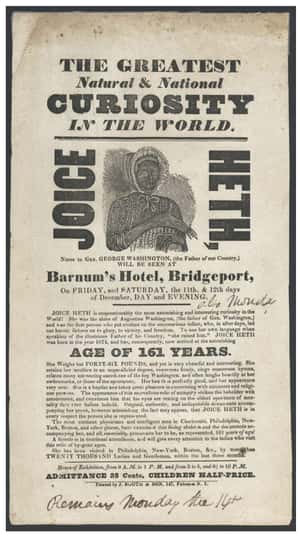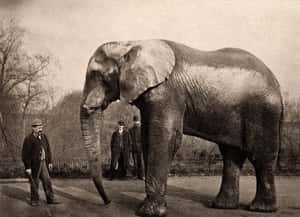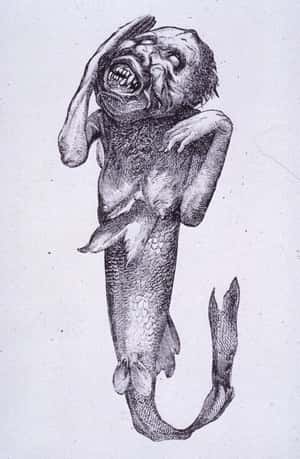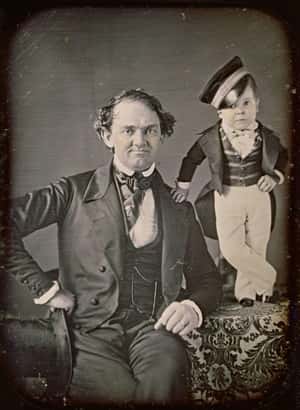https://youtu.be/yW8mF2be0I0
Sent from my iPad
14 Incredible Facts About American Showman P.T. Barnum

190k views 14 items
Who was P.T. Barnum? Phineas Taylor Barnum was the brilliant and bizarre mind behind a number of famous hoaxes and the Barnum & Bailey Circus. However, his biography is full of interesting stories that go above and beyond those well-known attributes – like, for instance, the fact that he didn't establish a circus until later in life. Rather, Barnum started in the journalism world, founding a weekly newspaper in Bethel, CT. In 1842, he established Barnum's American Museum, where he displayed various human curiosities, such as the Feejee Mermaid and General Tom Thumb.
Barnum did not establish a circus until 1870 when he was 60 years old. It was known as "P. T. Barnum's Grand Traveling Museum, Menagerie, Caravan & Hippodrome," and it included funny and creepy circus acts as well as a museum of "freaks." In the late 1880s, it became the "Barnum & Bailey Greatest Show On Earth," and later the "Barnum & Bailey Circus."
Before he died in 1891, Barnum asked a local newspaper to print his obituary so he could read it in advance. He was buried in a cemetery that he designed: the Mountain Grove Cemetery, in Bridgeport, CT. And, really, those are just the beginning of P.T. Barnum's quirks.
He Bought A Slave And Claimed She Was George Washington's Nurse

Barnum bought an elderly slave, Joice Heth, in 1835 for $1,000, and claimed she was 161 years old and George Washington's former nurse. She quickly earned back her purchase price: Barnum made up to $1,000 weekly by exhibiting her throughout the Northeast.
When the act began losing the public's interest, Barnum started a rumor that Heth wasn't human but an automaton. Heth died in 1836, and Barnum staged a public autopsy, which people paid 50 cents in admission to attend. The autopsy revealed Heth was only around 80 years old.
He Marched 21 Elephants And 17 Camels Across The Brooklyn Bridge

Just after the Brooklyn Bridge opened in 1883, there was a stampede that resulted in the deaths of 12 people. Prior to the incident, the bridge's owners had refused Barnum's offer to parade his elephants across the bridge to prove its strength. But following the tragedy, they took Barnum up on his offer.
On May 17, 1884, Barnum walked 21 elephants (including the famous Jumbo) and 17 camels across the bridge from Manhattan to Brooklyn. It was a win-win for both parties. It was great advertising for Barnum's circus, and the weight of the animals proved that the bridge was indeed strong and safe enough to carry cars and pedestrians.
His Feejee Mermaid Was Actually Half Orangutan, Half Fish

Barnum exhibited the Feejee Mermaid during the 1840s, and it quickly became the most famous fake mermaid on display (they were a popular curiousity during the era). At the time, hoax mermaids usually had the upper bodies of apes, which were sewn onto fish tails. It's believed the Feejee Mermaid was half orangutan and half salmon.
Barnum described the specimen in his autobiography as "an ugly dried-up, black-looking diminutive specimen, about 3 feet long. Its mouth was open, its tail turned over, and its arms thrown up, giving it the appearance of having died in great agony."
The current whereabouts of the Feejee Mermaid are unknown; it was supposedly rescued from a museum fire, and donated to the Peabody Museum at Harvard University. However, it's unclear whether that specimen is the original mermaid.
He Introduced The World To General Tom Thumb

Barnum met a tiny four-year-old boy named Charles Sherwood Stratton in 1842. Charles weighed just 15 pounds and was only 25 inches tall. Barnum specialized in finding "freaks," and immediately knew the boy would be a sensation on the sideshow circuit. He taught Charles how to sing and dance and renamed him General Tom Thumb.
Tom Thumb became so popular that he traveled with Barnum around Europe, and even met Queen Victoria in England.
















